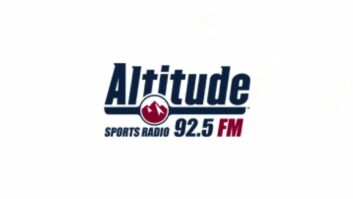Wesolowski is CEO of SSR Communications Inc., licensee of WYAB(FM) in Flora, Miss. Honig is president emeritus and senior advisor of the Multicultural Media, Telecom and Internet Council and president of MMTC Media and Telecom Brokers. They were co-petitioners for the C4 FM allocation discussed in this column.

iStockphoto/ABBPhoto Over the past few years, the Federal Communications Commission has pushed forward several major initiatives aimed at helping certain segments of the broadcast community.
Now smaller commercial FM broadcasters may finally get their turn to improve their stations. There is fresh energy behind the adoption of RM-11727, which calls for adding a new 12 kW “C4 Class” FM allocation as well as revising Section 73.215 of the commission’s rules.
With all of the press coverage surrounding AM revitalization, FM translator relocation, LPFM expansion and more, it has been understandable that the commission would overlook smaller commercial FM operations. After all, they do not have much of a lobby in Washington, nor are they usually the benefactor of FCC engineering initiatives (or sympathy, for that matter).
In reality, however, many of the remaining “mom and pop” operations are Class A FM stations dedicated to their communities and oftentimes “just barely paying the bills.”
HELPING CLASS A
In 2013, SSR Communications Inc. and the Multicultural Media, Telecom, and Internet Council petitioned the commission to assist smaller broadcasters through rulemaking RM-11727, citing nearly 800 Class A FM commercial stations in Zone II (rural America, in other words) that, in conjunction with changes to Section 73.215, potentially could upgrade from 6,000 to 12,000 watts from a reference height above average terrain of 100 meters. The commission took formal comments on the proposal in August of 2014; these were almost universally positive.
At this year’s fall Radio Show in September, Commissioner Ajit Pai gave vocal support to ideas similar to those in RM-11727, including the creation of a new C4 12 kW power class. Pai has moved this issue to the FCC’s front burner, which will be welcome news to hundreds of Class A FM operators. Even a modest increase in power for the lowest-wattage commercial stations would be well worth the added expense for most licensees.
The positive effects would be felt across the industry. Equipment manufacturers, tower companies, programmers, and above all, radio listeners will benefit from the added investment in broadcast radio.
Most important, all of the provisions of RM-11727, including the creation of a C4 12 kW FM allocation, can be enacted without affecting the existing service areas of other FM broadcast stations.
NEW CLASSES, NEW OPPORTUNITIES
The C4 allocation would be especially useful as a method of curing the abysmal state of minority broadcast ownership, which now stands at about 8 percent even though minorities constitute more than a third of our population. Minority owners, especially new entrants, need these C4 facilities to enhance their competitiveness by expanding their coverage.
In 2004, the FCC’s own group of outside experts, the (former) Advisory Committee on Diversity for Communications in the Digital Age, issued a Recommendation on Ownership Diversity that found that minority radio entrepreneurs “face significant competitive disadvantages due to their ownership of facilities having inferior engineering parameters.”
The committee recommended that the FCC should consider “new classes of stations” to provide greater access to capital and facilitate investment in new entrants. Notably, the committee concluded that new classes of stations would be “particularly beneficial to minorities by making possible cost-effective geographic niche service in large markets, and by making possible full market coverage in medium or small markets where new entrants often begin to build their companies.”
Ultimately, over 50 national organizations, including virtually all of the national civil rights organizations, endorsed this proposal.
TRANSLATOR IMPACT
Although the C4 proposal received broad support from a wide mix of broadcasters, including many low-power FM proponents, there have been a handful of dissenting opinions. The arguments of licensees of secondary stations, such as FM translators, revolve around the notion that the C4 proposal would somehow displace these services.
Even though no formal studies have supported that conclusion, it is a topic worth addressing.
As an initial matter, RM-11727 calls for the FM Class C4 allocation to be assigned to facilities in Zone II of the United States, the states generally considered to be “flyover country” and rural. In Zone II, there are generally several potential open translator frequencies in any given area, which means that it would be nearly impossible for a C4 station to displace a translator station completely.
Additionally, translators nested within the primary service areas of second- and third-adjacent full-power stations would welcome the C4 allocation, as it would allow these secondary services to specify greater facilities that would be unlikely to cause interference to the affected primary stations.
SPEAK UP NOW
Seldom is radio given the credit or attention it deserves by Congress or the FCC. But we can change that by being the squeaky wheel.
Remember, radio is the ultimate first responder: In an emergency it’s the technology of first and last resort. When everything else goes down, radio stations stay on the air with generators, and radio listeners with battery-powered receivers stay tuned. When local news happens, radio is nimble enough to report it first.
Our industry is irreplaceable. We all know that. But if we want it to continue to grow and thrive, we have to step up and make sure that proposals like C4 — the building blocks of radio’s future — get “attention paid” and get approved and implemented by our Federal Communications Commission.
We hope a notice of proposed rulemaking will come in the next few months. The commission needs to hear from you. If you have an opinion, favorable or otherwise, please take to social media and let the commissioners and their staffs know your position on RM-11727.
Comment on this or any story to [email protected]with “Letter to the Editor” in the subject field.












